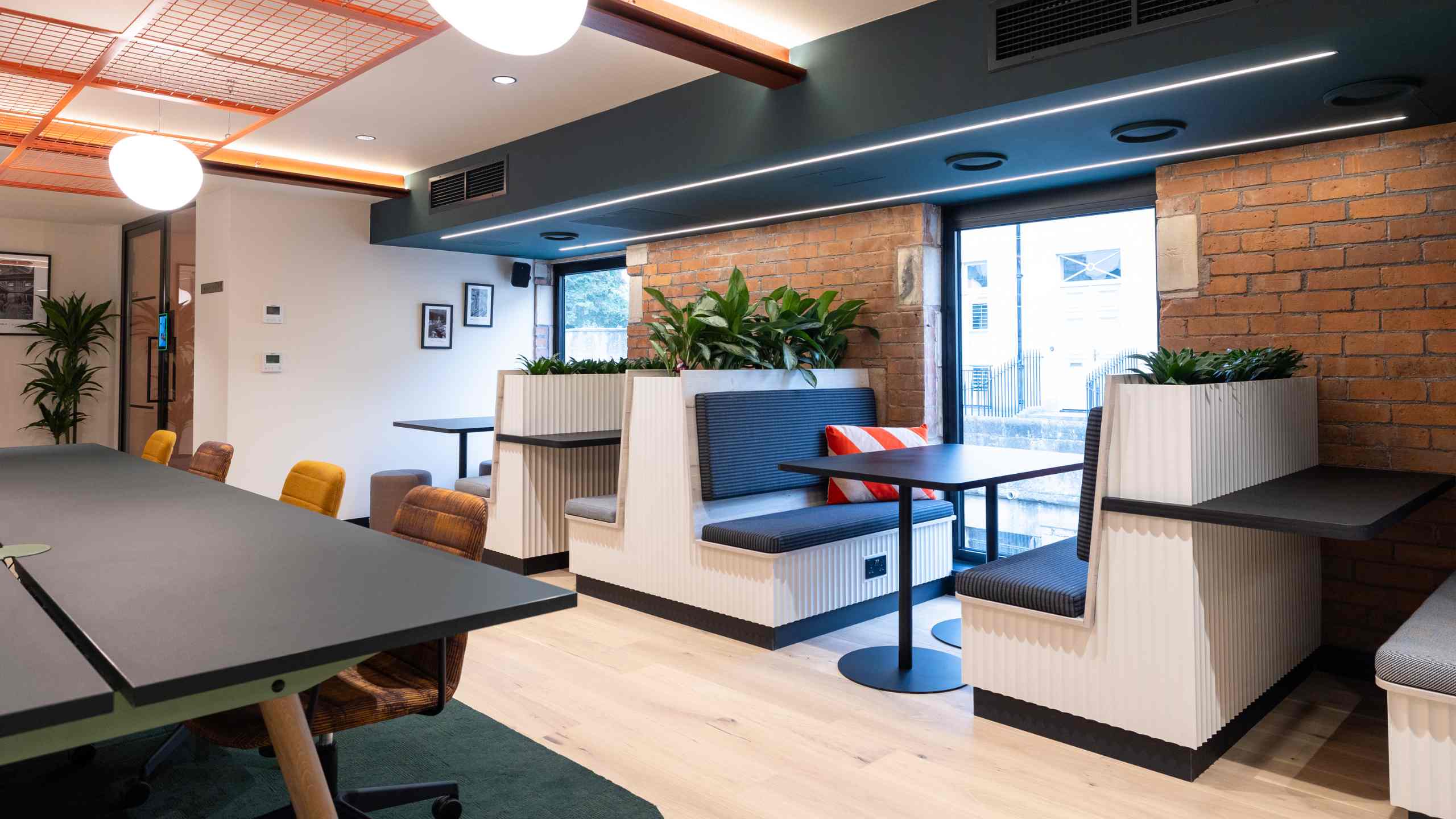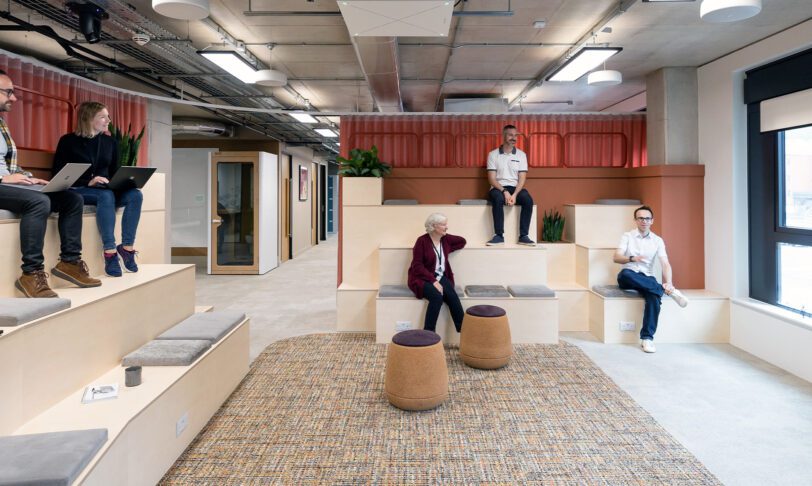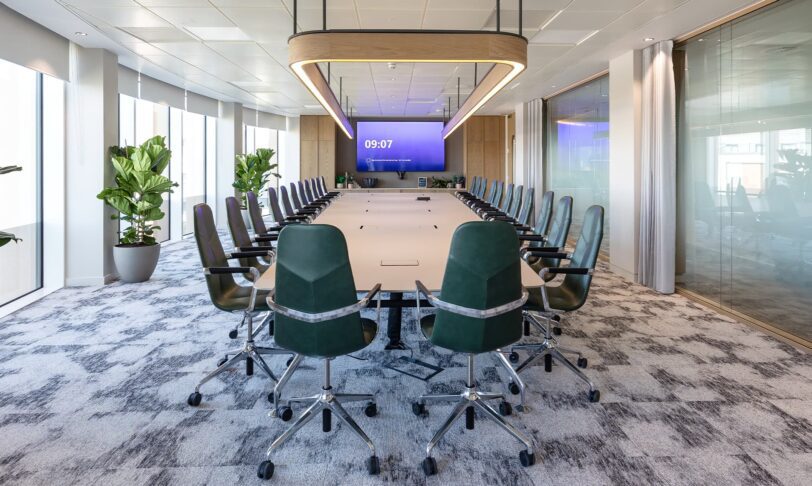Designing a hybrid workspace to attract employees back to the office
In a 2022 survey we commissioned, we found that only 8.6% of Southwest businesses stipulate that everyone must work in the office full-time. On the other end of the spectrum, just a small percentage are fully remote, leaving 86.4% of businesses employing a hybrid working policy. Whilst hybrid working was first harnessed as a mandatory health & safety measure for lots of us during the pandemic, many of us have learnt to love it. Whether that’s because of the lack of daily commute, ‘business on top, PJs on bottom’ attire, or more balance between work and life, 83% of survey respondents report that the ideal working environment is a hybrid workplace model.
After getting used to the luxuries of working from home, from bean-to-cup coffee to fluffy footstools, it’s no surprise that the traditional workplace offering needs a revamp for people to feel compelled to come in. After all, 45% of remote workers say they’d come back to the office at least one more day a week if the workplace offer improved.
Gone are the days of cubicles, white walls and dark spaces; the best modern workspaces combine traditional commercial features with home comforts: think soft seating, outdoor spaces, and inviting textures.
We recently moved into our brand-new workspace, The Quarter, designed with effective hybrid working in mind.
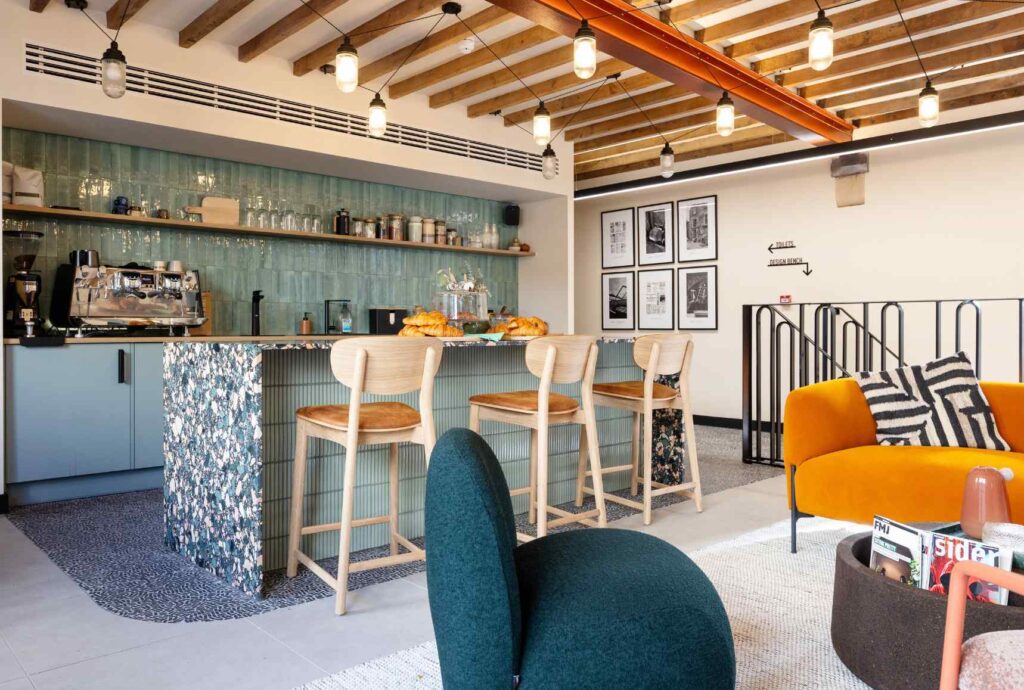
What is a hybrid workspace
A modern concept, a hybrid workspace blends the traditional, full-time office with remote or flexible working options. Often, these spaces will allow employees to choose where they work based on their working preferences, tasks at hand and landscape of each individual day. Usually, hybrid workspaces have great technology which helps with seamless remote interactions. They are now associated with work-life balance, less commuting stress and improved productivity.
The logistics of hybrid, and how to use it best
Everyone reacts to spaces differently, and it seems that there will always be an ongoing conversation regarding productivity in the workplace vs. at home. Pushing this to the side, many businesses are struggling with the rise of hybrid policies, finding their culture diluted, and business outcomes struggling as a result. This is dependent on the industry and types of workers employed, so some businesses may find that hybrid is the best option for them. Other businesses may thrive in a fully remote environment, and others will mandate face-to-face working: every business is different. It’s best to assess in-depth how your business works, which tasks require being face-to-face and which don’t, and always consider the opinions of your employees too.
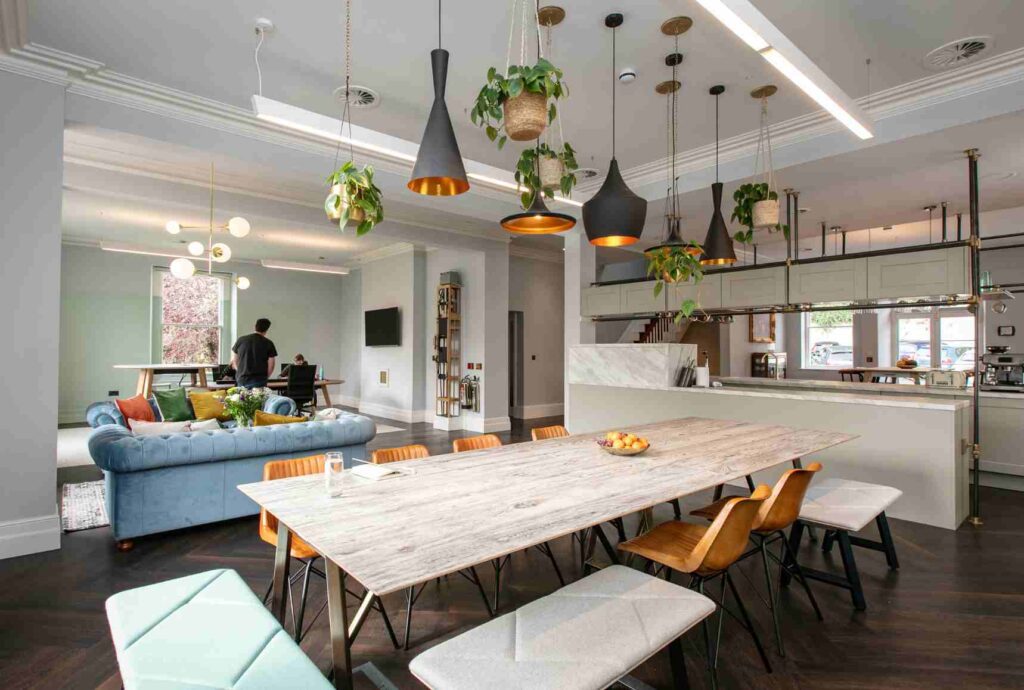
A successful hybrid Culture
Before we think about how best to design an office for hybrid working, we should start by making sure the business culture is set for hybrid success first. There are small things that you can do to ensure that the transition to hybrid work runs smoothly and doesn’t result in a dip in productivity, or worse, resentment. Frustration can occur if employees’ time or energy is wasted for reasons out of their control. To avoid this, consider mandating specific days in which teams come in to work collaboratively to avoid commuting to the office just to spend the whole day on Zoom.
Encouraging the wider team to connect in a social setting is another way to maintain a bulletproof company culture. It’s best to write up a clear hybrid policy so that the guidelines are consistent and there is no room for confusion. This way, everybody should have a great experience and feel the benefits of an improved work-life balance!
The importance of hybrid workspace design
Spaces must reflect their function, and as we mentioned in our guide to office design and productivity, you can’t expect workers to be passionate, engaged and enthusiastic in a dimly lit, high-walled cubicle. Office design plays a pivotal role in employee productivity, primarily using biophilic design, layout variety, and functionality. These are the key ways you can optimise your hybrid workspace:
- Wellbeing: Workplace amenities can influence personal wellbeing, one of the most important factors in retaining talent, engagement in work, and productivity. Offering home comforts and healthy spaces are an example of this. We delve into the relationships between office design and wellbeing in this guide to workplace wellbeing.
- Collaboration: The physical workspace also works to improve collaboration, offering spaces for impromptu brainstorms, presentations, all-hands meetings and formal boardrooms. These spaces are worlds apart from their hybrid alternative, where phrases like ‘I can’t hear you’ and ‘can you see my screen?’ are familiar.
- Biophilic Design: The workplace can be made more compelling through biophilic design, which is the concept used to increase connectivity to nature using natural light, natural materials, plants, water features and views of nature. It goes further than potted succulents, great biophilic design can improve wellbeing by up to 15%. Find out more in our article ‘What is biophilia?’.
- Ergonomics: We spend 90,000 hours ‘at work’ over a lifetime, so it goes without saying that we need a comfortable working environment. Ergonomic chairs, sit-stand desks, adjustable screens and easy access storage should be a given in the workplace, and won’t compare to a laptop balanced on a pile of books while you sit cross-legged on your bed.
- Morale: When employees perceive that their workplace has been thoughtfully designed with their wellbeing and productivity in mind, they feel valued and appreciated by their organisation. Personal pride and collaboration are boosted, and as a result, productivity, motivation and job satisfaction can increase.
Incorporating hybrid working into a return-to-office strategy
When developing a return-to-office strategy, it’s important that you carefully evaluate employee preferences, office capacity and other logistics such as commuting. Another key consideration that many employers are placing higher on their priority list is sustainability, especially since hybrid work has been shown to save around 400g of carbon emissions per person in just one summer, the equivalent of 5% of a typical British commuter’s annual carbon footprint.
Some of the most common arguments for hybrid work relate to extra time “gained back”. Whether that’s used for some extra sleep, exercise, family time or for personal development, most of us would rather free time over a hectic rush-hour commute. That said, when the workplace offering is significantly better than its at-home equivalent, it would be a no-brainer to make the journey into the office, after all, that’s where you’ll be for most of the day.
It’s great to take advantage of the perks of office working in your return-to-office strategy – friendly faces, more space, instant communication, and a sense of morale: after all, remote work can feel transactional.
Collaboration spaces, big windows, plants, variety in working areas and aesthetically-pleasing but functional design are all examples of workplace features sure to pip the home office to the post.
Different teams behave in different ways – one may work efficiently remotely from each other whilst others may thrive most when working together. No one person is the same as the next, and what’s more: your employees will feel much more valued if you give everyone an opportunity to share their thoughts & values before deciding. Throughout the process of implementing a return-to-office strategy, clear internal communication is important, and it’s more likely that people will stay on board if they’re kept in the loop and all decisions have been justified to them from the get-go.
Adapting the office layout
The office needs to be a varied space, incorporating a range of areas to accommodate different ways of working. Aside from the standard desk, where workers will spend most of their time, consider including other zones such as:
- High Benches
- Touchdown points
- Soft Seating
- Phone Booths
- Private Focus Rooms
- 2-Person Focus Spaces
- Collaboration benches
- Standing work areas
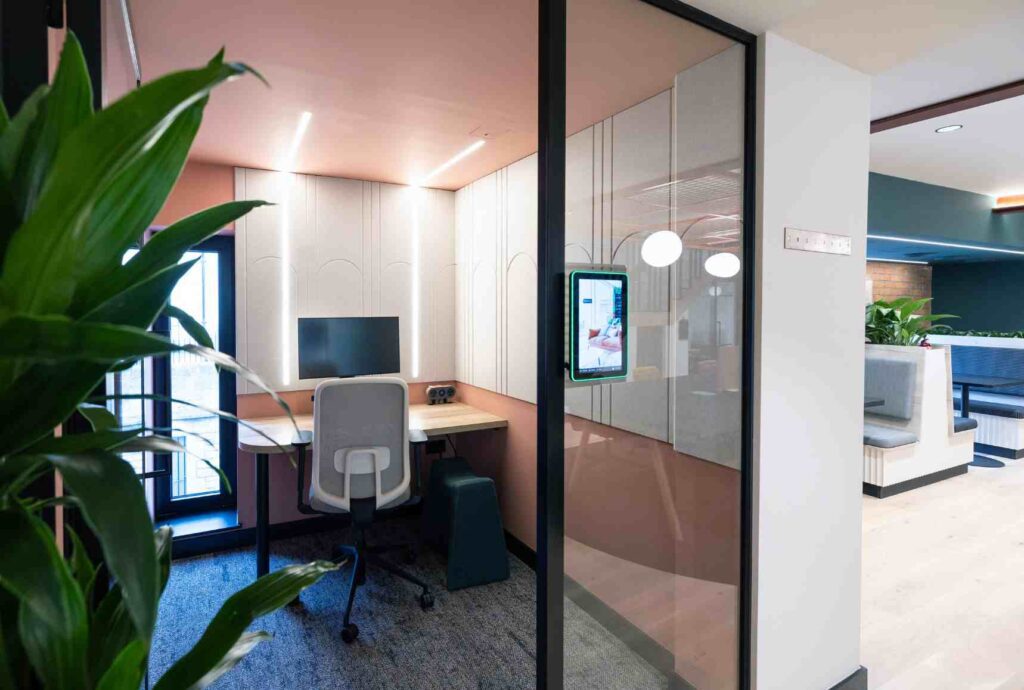
This variety between private areas and busy collaboration zones means that employees have the autonomy to work where they choose, depending on the task at hand and their own preferences. This is especially important when designing for a neurodiverse workforce, and even better if lighting and sound can be adjusted to suit the user.
You might be wondering how you’re supposed to fit all those spaces into one office: unless your firm is especially large you likely won’t have the space. Luckily, we’ve got you covered. We’re experienced in creating multifunctional spaces that seamlessly transition from one zone to another.
Curtains, moving partitions and screens easily transform a private space into a shared one. This way, you can prevent your workplace from becoming cluttered and overwhelming but keep all your requirements at your fingertips.
We also like to consider future-proofing when planning a space, making choices based on their multifunctionality, alternative uses, and the ease of doing so. Not only does this give your workspace more longevity, but it’s often more sustainable too.
The workplace can have various layouts, from those that are more structured to those that are open to interpretation. Hot desking is increasingly popular, giving employees the opportunity to get to know the wider team, gain an insight into what other departments are working on and select their workstation depending on what they need to get done that day.
Here at Interaction, we have a wealth of experience in designing broken-plan offices. offering a variety of workstations without harshly dividing the space with partitions. We love combining this layout with dedicated focus areas and meeting spaces, resulting in a truly varied workplace. In saying this, no business is alike another, and depending on your workforce, industry, hybrid policy and even the building you’re based in, we’ll work with you to bring you a bespoke solution.
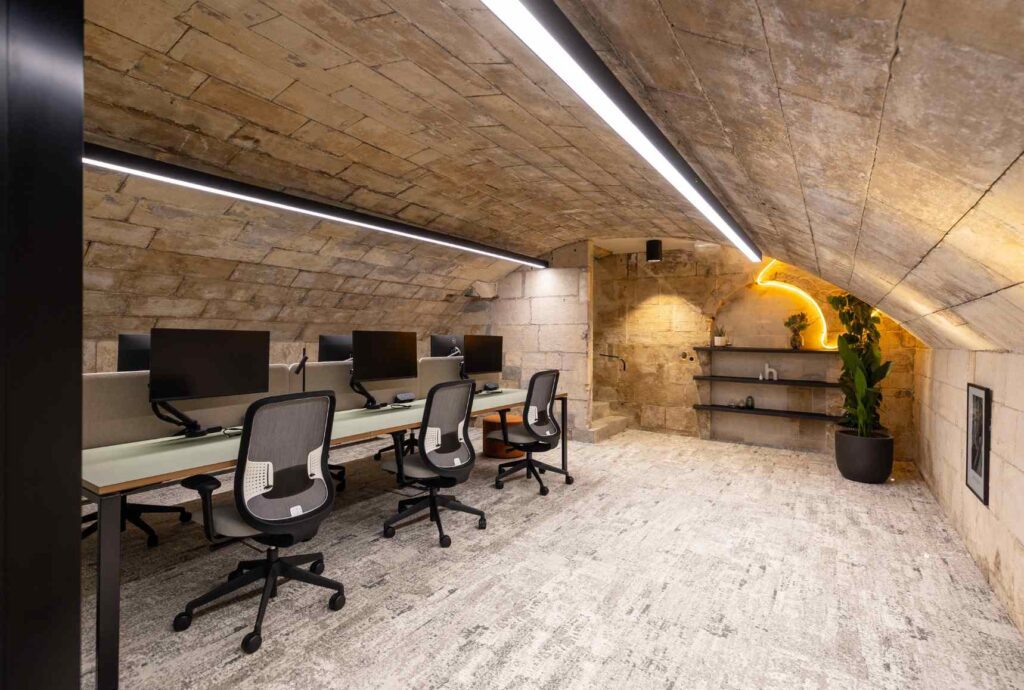
Incorporating technology and connectivity
One clear signpost of a hybrid workplace is integrated and seamless tech, allowing teams to interact whether they are in the office or working remotely. Meeting rooms should be equipped with screens, cameras and microphones (not to mention good acoustics) to facilitate video calls. Cloud technology, great security, reliable internet connectivity and instant messaging are some of the other key considerations for an efficient hybrid business. Without these, employees won’t be so productive or engaged, which can cause job satisfaction to decline, and turnover to increase.
Creating a healthy and well-being-focused environment
Office design should be centred around employee wellbeing and accessibility. This means that every one of your people should be able to work in the office easily, safely and healthily. Designing for wellbeing can look like:
- Using neutral and calm colour palettes
- Giving space for mothering, prayer and general wellbeing
- Offering quiet working areas
- Including outdoor space or access to fresh air
- Fitness facilities such as a gym or spin studio
- Active travel facilities like bike storage and on-site showers
- Incorporating spaces for team socialisation and activities
- Clean and hygienic facilities
- A comfortable environment with adequate heating and light
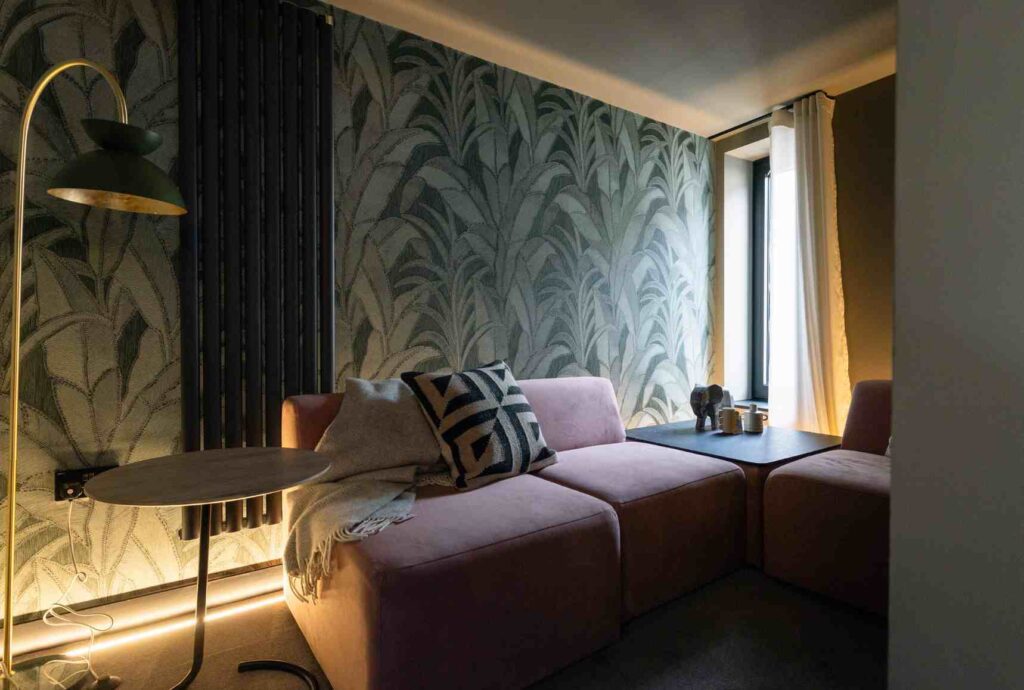
Going above and beyond with the workplace offering means that your people will get more from the office experience than just work. For example, 61.4% of people in England aged over 16 are ‘physically active’, so if they can combine work with their workout and save themselves a trip to the gym, let alone the membership costs, they are more compelled to come in.
Another way to improve wellbeing is to use biophilic elements to improve air quality, like we did for Osborne Clarke. Over 1,000 plants fill the space, which can reduce air temperatures by up to 10 degrees. Similarly, you could use standing desks to encourage healthy choices and give variety to the workstations.
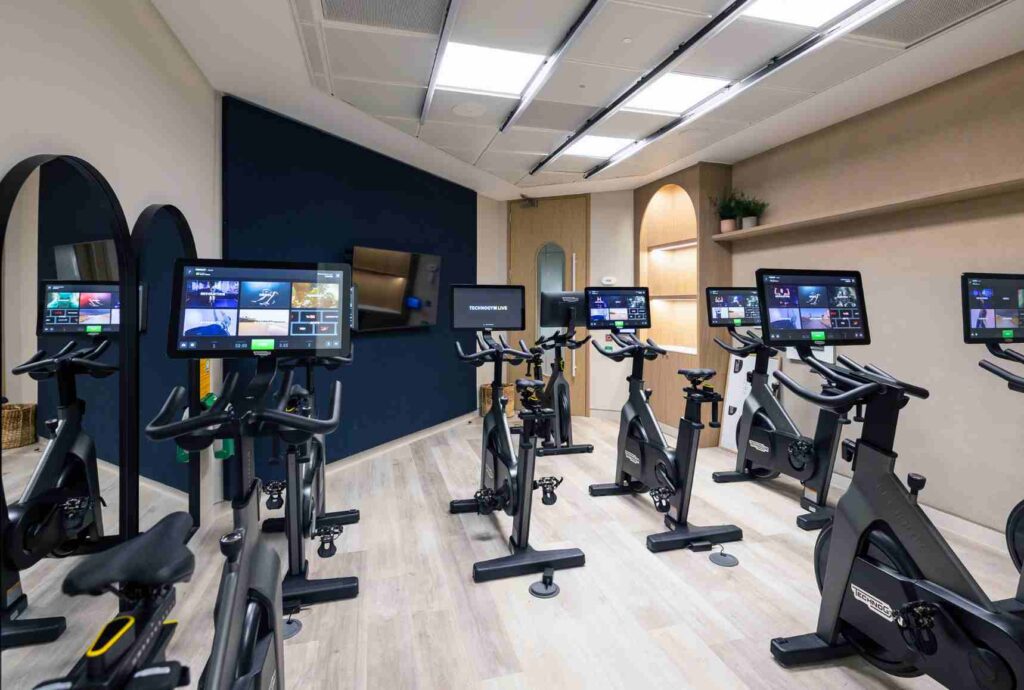
Customising the office fit-out
We love to start our journey with each client with a full insight into your business, organisational culture, values and desires. This way, we can help you to achieve a fully customised, meaningful workplace that works exactly how you need it to.
We also consider colours, branding, artwork and signage with our office fit-outs, helping us to create a cohesive environment that aligns with your business and creates an inspiring work environment.
When possible, we conduct employee surveys and workshops to foster a sense of ownership and engagement. This is another great way to encourage employees back to the office, if they feel like they were a part of the design & planning process, and it has been designed with them in mind.
An expert opinion
As you can see, there’s a multitude of layers that, when combined, can make a compelling workplace experience and help your business see effective results in its return-to-office strategy. Without great office design, the workplace offering is less alluring to employees. We’ve got over thirty years of experience, and are on hand to share this as we work alongside you.
Take a look at some of our work to get a taste for the spaces we are passionate about, or why not read some more of our articles?
If you are ready to take the next step in bringing your people back together, improving collaboration and seeing elevated results for your business, get in touch. Give us a call on 01225485600 or send us a message, we’d love to hear from you and bring your office designs to life.
